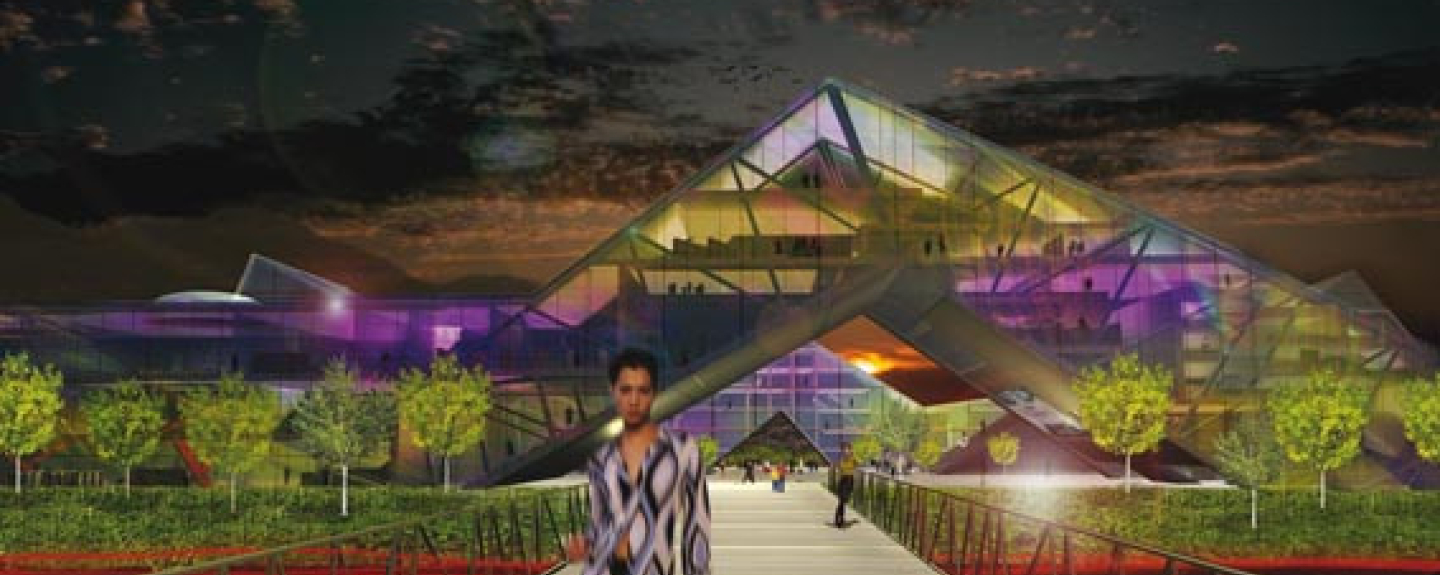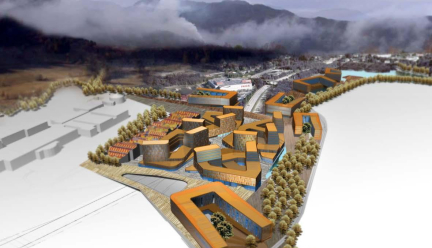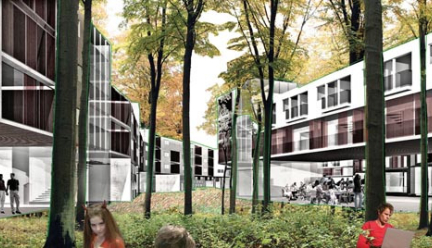Project:
Strips - Beats - Breaks

About
-
STRIPS. By combining, stretching and relating the given urban programmes and maximising the public facades towards urban streets, the proposal enhances social and visual exchange and encourages functional interaction. The building strips have three different thicknesses, optimal for the three main functions – shopping, office and residential. The layout creates a transition in scale from Arken and the highway to the Selegrand housing scheme.
The public spaces in between have two distinct characters, street and park.
The proposed organisation creates a solid sound barrier towards the highway and is at the same time structurally open to the north and the south, bringing air and views to the landscape into the unusually dense urban structure.BEATS. The primary public programmes are formally/spatially enhanced.
The new city “peaks” at the most intense points – where public programmatic energy is at its highest level the city literally becomes taller. This gives a beat and a pulse and an energetic and lively urban image. The peaks become the new city landmarks – equivalent to the church, city hall etc. of the traditional city.BREAKS. Urban breaks are fields of connection, both externally and internally. Through breaks in the urban Strips, the new city centre will relate to the Åsane context, drawing energy and providing energy it to the urban areas west and east of the site. Urban Breaks become public spaces of special interest and possibilities.
-
The first prize project "Strips - Beats - Breaks" confronts the potentialities and problems of Åsane by proposing a multifunctional platform where streets and public spaces are reserved for pedestrians. Parking has been moved underground. This strategy allows the challenges of Åsane to be solved on two different levels. On one hand, the high car accessibility of the site is maintained and even strengthened. The new urban project takes advantage of its location along the motorway, combining visibility and accessibility on regional and local levels. This strategy is compatible with that of the existing Åsane shopping center vis-à-vis. At the same time, BE123 avoids the conflict between soft and hard mobilities by clearly separating these. The proposal includes moving the bus station to the north of Åsane center and linking it to a new pedestrian bridge that spans the motorway. All outdoor spaces on ground level are reserved for pedestrians, cyclists, visitors of cafés, cinemas, etc. The concept for the urban structure is to organize different functions in three strips: shopping and entertainment; offices and service-related business activities; for the strips housing and hotels. The program on each side correspond to existing programs and tend to be extensions of the center on the one side and the residential areas on the other.
The infrastructural strategy of the project allows two separate urban systems and two different scales to live side by side and to profit from each other. Among the entries, this project has the strongest scheme for organizing the different functions that are likely to be located here in the future. -
Team leader: Lars BENDRUP (DK)
Collaborators:
Duncan TAYLOR (UK)
Thomas LUND (DK)
Stephan GUSTIN (DK)
Marie THYE-PETERSEN (DK)
Jens KINCH (DK)
Yukako YAMASHITA (JP)
Related projects
-

Strips - Beats - Breaks
By combining, stretching and relating the given urban programmes and maximising the public facades…
-

L.A.R.S Linking Åsane
L.A.R.S. linking Åsane - a re-mastering strategy - formulates a new town centre for the Bergen…
-

PULS Medusa
The PULS_medusa project focuses on the strengthening of local movement, environment and identity,…